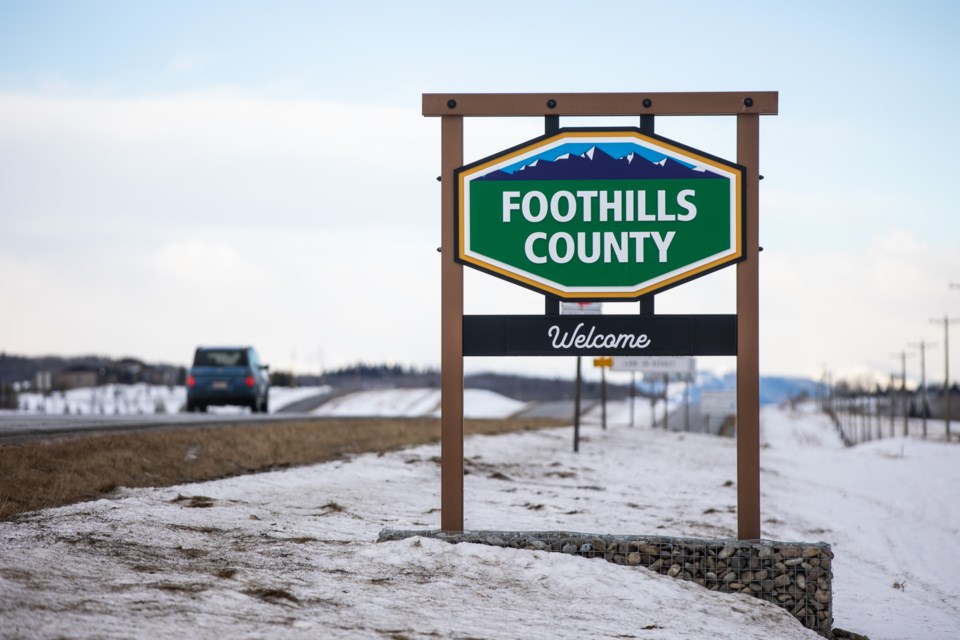Foothills residents may not see much change to their tax bills this year.
County council held its budget meeting on May 4 to discuss its draft mill rate bylaw, which indicates a mill rate increase of 2.7 per cent for residential, a decrease of 0.42 per cent for farmland, a 3.3 per cent decrease for non-residential, and a 4.45 per cent decrease for machinery and equipment operations.
“For the majority of our residents, taxes will remain the same or flat,” said Christine Hummel, director of corporate services for Foothills County, adding 91 per cent of property owners will see an increase of $100 or less.
Several factors contribute to the 2021 mill rate, she said.
The assessment for Foothills County dropped, with residential assessment decreasing by 2.14 per cent overall and farms decreasing by 0.11 per cent.
In addition, RCMP funding of close to $1 million was included in the 2021 budget – a cost that is expected to rise to $2 million annually in subsequent years.
There was a 9.26 per cent increase in total requisitions to the municipality for Westwinds Communities, library and education as well as costs such as ambulance dispatch, recreation and shared services with neighbouring municipalities, fire services, and Provincially-designated industrial property, said Hummel.
“We still have the same amount of spending this year for services, so while assessment did drop on residential we have an increase in the mill rate of 2.7 per cent,” she said.
In total, the amount of taxes collected by the municipality will be lower than last year but the same service level will be maintained, she said. In 2020 the County collected $26,545,000. This year is stands to bring in $25,755,000 due to decreased assessment.
“That’s something to keep in mind, if Foothills County wants to continue to provide the services they’re currently providing, at some point this is not sustainable,” said Hummel.
Municipal Manager Harry Riva Cambrin said efficiencies were found on the operations side with cost-savings for products used by crews, which allowed some of the increased expenses to be absorbed by the municipality.
He agreed that increasing costs in recreation, fire and policing will not be offset by reduced price points for the long term.
“We leave ourselves open in the future to running a deficit because we’re very close,” said Riva Cambrin. “We’re running really close to actual cost and weather can have a huge impact on what we spend in any given year, especially on roads and public works.”
Unexpected costs, such as having to pick up 10 per cent of costs under the new Disaster Recovery Program should the County be hit by an event similar to the 2013 flood, are unpredictable and could cost as much as $4 million, he said.
“We do have some reserves and we have some contingency, but whether we have enough, I think there needs to be more discussion on really what’s healthy, how much of a buffer is really necessary,” said Riva Cambrin.
Reeve Suzanne Oel commended County staff and councillors for the diligence in reworking numbers to come up with a palatable mill rate during tough economic times.
“There has been a lot of give-and-take in all of our departments in order to absorb some increase in fire and recreation costs,” said Oel in an interview.
She said overall, the mill rate for 2021 is positive given the increase in expenses and decrease in assessment.
There is also some good news for business in the County, she said.
“Many businesses will see a reduction because both their assessment and the mill rate decreased,” said Oel. “At least there’s something in recognition of the tough year for some of those businesses.”
Moving forward, she said the focus will be on planning for future years when the Municipal Sustainability Initiative (MSI) funding and gas tax are set to decrease. The County is expecting to receive significantly less in provincial funding by 2025.
It will mean taking a close look at service levels to see whether adjustments need to be made, and considering the tax rates, she said.
The County will also be actively looking to ramp up its non-residential tax base in order to relieve its residential taxpayers, she said.
“We will continue work to attract more industrial, non-residential to the County,” said Oel. “We’re certainly seeing a lot of interesting applications and seeing people who are very creative, so this is a result you hope for.
“People are trying, they are coming up with ideas. From our part, to see that is rewarding.”




